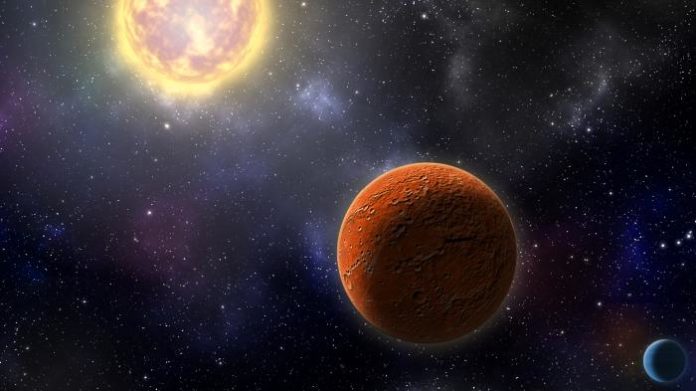NASA’s Transiting Exoplanet Survey Satellite (TESS) once again demonstrates with the discovery of its longest-period confirmed planet to date. The satellite has confirmed the existence of HD 21749b (TOI 186.01), a sub-Neptune in a 36-day orbit around a bright dwarf.
The discovery was made by a team of astronomers that includes Carnegie’s Johanna Teske, Paul Butler, Steve Shectman, Jeff Crane, and Sharon Wang.
TESS proving itself as a game changer as it surveys the sky and we collaborate with the TESS follow-up community to flag potentially interesting targets for additional observations using ground-based telescopes and instruments. A tool named the Planet Finder Spectrograph on the Magellan II telescope at Carnegie’s Las Campanas Observatory in Chile also played a crucial role in this discovery. It helped to confirm the planetary nature of the TESS signal and to measure the mass of the newly discovered sub-Neptune.
The telescope works by using a technique called the radial velocity method, which is currently the only way for astronomers to measure the masses of individual planets. This method takes advantage of that fact that not only does a star’s gravity influence the planet orbiting it, but the planet’s gravity also affects the star in turn. The telescope enables astronomers to detect these tiny wobbles that the planet’s gravity induces in the star’s orbit.
The sub-Neptune, HD 21749b has the longest period of any of the TESS discoveries published so far. Because of the technique that TESS employs, it is predicted that most of the planets the mission finds will have orbital periods of fewer than 10 days, so HD 21749b is unusual in this regard. In fact, this also made the detection of the planet in the TESS data an extra challenge.
HD 21749b has about 23 times Earth’s mass and a radius of about 2.7 times Earth’s. Its density indicates the planet has a substantial atmosphere but is not rocky, so it could potentially help astronomers understand the composition and evolution of cooler sub-Neptune planet atmospheres. Moreover, its host star contains 80% mass of our Sun.
What’s fascinating, this sub-Neptune planet is not alone to have a longer period. It has a sibling planet, HD 21749c, which takes about eight days to orbit the host star and is much smaller—similar in size to Earth.
Carnegie’s Johanna Teske said, “Measuring the exact mass and composition of such a small planet will be challenging, but important for comparing HD 21749c to Earth. Carnegie’s PFS team is continuing to collect data on this object with this goal in mind.”
Lead author Diana Dragomir of MIT’s Kavli Institute for Astrophysics and Space Research said, “For stars that are very close by and very bright, we expected to find up to a couple of dozen Earth-sized planets. And here we are—this would be our first one, and it’s a milestone for TESS. It sets the path for finding smaller planets around even smaller stars, and those planets may potentially be habitable.”
Their work is published in The Astrophysical Journal Letters.
